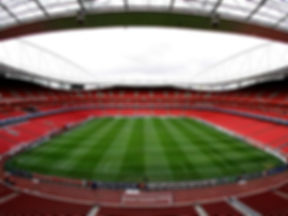
Referee Articles
Optical Illusion
Recently, in Colombia a phenomenon occurred to an Assistant referee, in the match between Millonarios and Once Caldas in the Stadium Nemesio Camacho located in “"El Campin"” in Bogota. The soccer ball was on the line, made a strange movement, rebounded off the same line and moved about 15 centimeters outside the field. However the referee did not notice this and allowed the game to continue. In this case it was checked that it was not simply oversight, but that the referee was vulnerable to a deceptive illusion.
By Antonio Pulido, Revista Arbitros

In all tournaments
Not only in this match but in others different championship games, this situation has happened and the majority of players, fans, the media and experts generally attribute the mistake to a lack of concentration by the referee, which could be right. However, a study by Professor Whitney opens new ways to study the existence of another factor that until now had not been considered.
Why it happens
According to the study, the error occurs because the perception of our brain is delayed a few milliseconds with respect to reality. While the brain is processing the image of a moving object seen by the eyes, the object continues to move.
To compensate for this effect, the brain makes estimates of where to go next in order, based on the object’s speed and direction of the trajectory. Most of the time these assumptions are successful and that is why the referees can get it right countless times.
Another misperception
In general, when working alone, referees are victim to this phenomenon and their assistants make the mistake when the ball is moving very fast with sudden changes in direction.
The assumptions they make in their brain may lead them to make wrong decisions because the ball has continued moving and the assistant believes that the ball is in the field of play and may not be aware that it is outside.
The statistics offer proof
The results of this study were found initially in tennis, and later applied to other sports like soccer. In all of the example cases it was recorded when the ball fell near or over the line.
Whitney hoped that the referee saw the ball rebound in the direction of its original motion, which would occur in more spherical landings outside the line. His hypothesis proved to be correct, since 84 percent of the 83 incorrect judgments observed were due to errors in which the ball was declared "outside of the field" when it really was inside.




